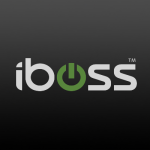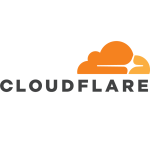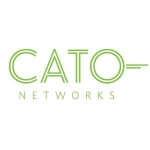What is our primary use case?
We're actually in the process of using this to replace our current web proxies. We use both, side-by-side, at the moment. The plan in the future is to eventually get those replaced with Umbrella so that we can have an overall, overarching proxy either that's based in the cloud or whatever we need. But this currently is our most convenient way of replacing web proxies across all of our locations at our company.
How has it helped my organization?
It's definitely made things more centralized. Our current setup is that we have proxies, either physical or virtual, throughout our different locations. Each location has its own proxy at the moment. What's nice about Umbrella is that we can just go into the site and see all of our locations in one place and look at all of our computers, users—everything. It's not divided into separate proxies that we have to go into and figure out which person's using which proxy. Umbrella lets us just see everybody at once, which is really handy for us, and we don't have to spend too much time messing around with figuring out who's where and which location needs this change. [We can just make] changes throughout every location at once, rather than one at a time with those proxies that we currently use.
The past couple of years, [the fact that the solution helps support hybrid work has been] especially important because now we can't use those proxies if people aren't onsite. The way our network was set up was that we had it filtering through the firewall and the firewall was taking certain subnets and filtering those through the proxy. But obviously, when people work from home, we had to get a VPN connection set up. Before COVID, we did not have a work-from-home solution at the time, so everybody had to be in the office. Obviously, that all changed very quickly and Umbrella became a much bigger priority for us because that was our main replacement for those proxies at the time.
We had to expedite the process of setting it up, but what was nice about Umbrella was that it was so user-friendly, it was so easy to set up on our end, that it didn't take as much time as we thought it would. It just simplified the entire process throughout the couple of years that we have especially needed it. But what's cool about that is that now, it's a permanent part of our network. Thanks to the last couple of years, we use it all the time now. It wasn't just a temporary solution for hybrid work because now we use it for both. We have the ability to do hybrid work, but we also have the ability to use it for our employees onsite as well.
[When it comes to threat remediation] most of it is automatic so we don't really have to worry about it too much. Umbrella will just block something if it detects it as malware. That is a super convenient feature for us, that we don't have to manually review every single site. If we do have to review a site, it's nice to have that investigative tool. We put in the URL and it gives us a risk score, depending on how dangerous that site might be. That's super helpful for us to analyze that site, take a look at it, and make a decision on whether we need to block it, or if it can be unblocked. Every situation is different, but Umbrella makes that summary page very convenient for us. It allows us to make decisions much faster and more efficiently.
Our cyber team is a bit different from our network team. We have a separate team for that, but it's nice because they also use Umbrella for a lot of that, depending on what the site is. We use the investigative tool for the risk score, but it also comes with a few other tools, and part of that is just so that they can assess what's safe and what's not safe and what might be detected as malware. Obviously, they have other tools for that as well, so Umbrella is just one cog in the big system. But it definitely allows for easier communication between our teams because we both use it and we can both understand it. It's user-friendly enough so that we can make decisions with them based on what Umbrella tells us and how we interpret that information depending on the site, the situation, the risk score, everything.
We have a lot of employees, a few tens of thousands. We get probably hundreds [of threats blocked] every day. I wouldn't be able to give an exact number on how many are blocked. The main ones we look at are the ones that people request us to specifically look at because they might not think that something was supposed to be blocked, or something is not working properly, and we can go in and investigate that. But there are probably hundreds to thousands of blocks per day on the sites, across all of our locations. That automation allows us to relax a little bit easier and know that our network is much safer with Umbrella on it than it is off. The automatic side of it is basically saving our jobs. That really helps, and we're able to look at anything. Overall, as a program, it has saved us a ton of time and stress by not having to worry about malware or viruses or anything malicious.
What is most valuable?
One of the coolest features, for me at least, is to be able to type in a website and have it give an overall summary of how safe that website appears. Part of that is just so that we can investigate. And if there's any sort of confusion between our cyber team and us, we can look further into that site and dive more into that risk score that Umbrella gives us. We can just analyze [those sites] and make sure that we're unblocking safe sites and blocking sites that we deem could be harmful for our employees.
I would say it provides single-pane-of-glass management. We still, of course, use those old WSAs, but in the long run, our plan is to get those replaced with Umbrella. We have locations in Japan, Korea, China. So it's a little bit more difficult to go through one proxy for all of those, especially because it's a bit slower. What's nice is, [with] Umbrella being in the cloud, we can just go into the site, see everything from the management console in that page. Nothing is slow [and] nothing is hosted by us so that we don't have to worry about network issues or management issues. Everything is just laid out right in front of us from the Umbrella dashboard on the internet, in the cloud. And that makes it super helpful for us to just manage all that from one spot across all of our locations across the world.
We aren't a very big team, so that's the main thing. Going through filtering web traffic or blocking sites or unblocking sites, whatever we need to do, can be a bit tedious, especially when we have all these different locations and we would have to go into each location specifically to perform these tasks. Umbrella, being one pane for managing, being all-encompassing, allows us to quickly go in, make a change, and it applies to either every location, if we want it to, or we can have policies in place that only apply to certain users or certain computers. And that makes it super useful for us because we're not messing around with jumping into all these different locations and manually doing each and every one individually. It is extremely helpful for us and it improves efficiency exponentially.
For how long have I used the solution?
I have personally been using Cisco Umbrella for almost a couple of years. Our company implemented it about five or six years ago. Most of that time was spent getting it set up, but we've really been using it more within the last two or three years now, so it's still pretty new to us at the moment.
What do I think about the stability of the solution?
[In terms of maintaining network connectivity] obviously it depends on the situation. With Umbrella, it's a bit easier, for sure. There are times where Umbrella, on their side, is having an issue and we're notified of that issue. But in that case, there isn't really much on our side that we can do. To that extent though, the pros outweigh the cons. It's pretty rare that Umbrella is having a problem. The way that our network is set up is that we can reroute traffic pretty quickly using our other Cisco devices, so it's not usually a big issue for us. We have fewer problems with Umbrella than we do with our physical WSA proxies that we currently use, because that is something that we would have to troubleshoot on our end, and we're not always there on site to be able to do that. Then we have to go through someone else who's over there and they have to console us in and we have to troubleshoot whatever's going on over there.
With Umbrella, it's nice to have them tell us what's going on so that we're aware of the situation. If there are any problems, then we'd know what the issue was and how we could work around it. That makes it a bit simpler for us.
Network connectivity isn't really a huge issue for us with Umbrella, specifically. Our use case mainly is just for blocking internet traffic, making groups. We have social media groups where we allow certain computers in places to have access to certain social media sites that we wouldn't normally do. We have other sites being blocked, depending on their use case. That's mainly our function with Umbrella. Internet connectivity is usually not a huge issue regarding Umbrella with us, but if it ever is, it's nice that they communicate the issue to us, [so] that we can work around it.
How are customer service and support?
In my experience with Umbrella support, sometimes the response times take a bit more time than we would like. Obviously, it depends on how they're contacted. But usually, when I contact them via phone, their support team is great. They help me out with everything. But sometimes, if you go through email, it can take quite a while to get a response. Obviously, if it's through email, the issue's probably not as pressing as it would be through a phone call, but the response times could be a little bit better. Email, I usually just avoid. I usually just call them now.
They're super helpful. In terms of response times, it could be a little bit better. Some issues are more urgent than others, but if it's an urgent issue, obviously we just call. Sometimes it takes a little bit [of time] for them to get back. I would probably rate them a seven out of ten.
How would you rate customer service and support?
How was the initial setup?
We've had to deploy connectors across certain locations, but [in] all the locations we have a domain controller and that needs to be deployed on those domain controllers throughout all of our different places. I've done a couple of deployments. Most of it was already deployed just by the time I got here.
[In] my experience of how deployment went, it was very easily laid out, very simple. The instructions were super clear. I didn't have any issues with that. As more of a newcomer to the entire industry, this has been much easier than I expected it to be. Umbrella, as a product, is very simply laid out, very user-friendly. I couldn't praise it enough for helping me out with my job.
While the support [can] sometimes take a while, overall they're super helpful, they make it very easy and they make you feel like you're not doing anything wrong. They're super friendly and make everything super easy for you. Umbrella as a product, overall, is very user-friendly, as a newcomer to my company.
What was our ROI?
The plan is to replace those physical proxies that we have. In terms of return on investment, getting rid of those across each location [has been valuable]. In terms of the efficiency with time, it's definitely saved us a lot of time and money troubleshooting different issues and securing the network and helping people access what they need to access. Just in terms of time and efficiency, it definitely has a return on investment.
Trying to replace those physical ones as well, getting rid of those, just having this be the all-encompassing way of filtering traffic and unblocking, of making policies, it definitely saves us a lot of time with the solution that's offered.
What other advice do I have?
In terms of [our employees] feeling supported, they have the ability to submit a request to us very easily. When they get blocked from a site, it's not just one page saying you're not allowed here. They have the ability to submit a request to us so that we can look further into that site. That makes our employees feel more included in the process of helping the company access the sites that it needs to use, [as does our] communicating with those employees [about] why a site might be blocked; or a site that needs to be blocked based on what they find and what they're doing for their job. The important thing is that they're able to talk to us in case there's a site that they think that they need to access and helps them feel included in the entire process.
Like I mentioned earlier, it's one cog in the big system that we have out of our solutions for cybersecurity. We also use products like AMP, we have certain firewalls that also block certain things, the way they're configured. But overall, Umbrella, if we're talking about users on the internet, using sites or accessing different websites, is a big help in determining what exactly they need. We can go into Umbrella and help them understand why something might be blocked, or if they need to get into something, we can make certain policies within Umbrella. It's obviously just one tool out of the many that we have, so these configurations are pretty involved and even I don't know how they all work. It's divided amongst our team. For cybersecurity in general, it's great. It simplifies it. It's very useful in terms of the automation and how it blocks everything, and how all that stuff is interconnected. I would say that it is a lifesaver for us.
As somebody who is pretty familiar with networks and just learning everything, but being an inexperienced network manager, I would say that it makes the entire process very painless, very super simple to understand. In my experience, it's a nine out of ten.
Disclosure: My company does not have a business relationship with this vendor other than being a customer.




















